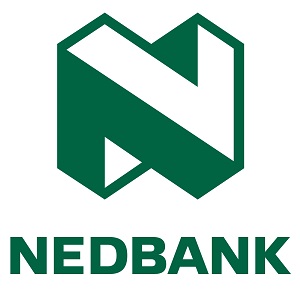Brands Social
Meta’s Makeshift Move: Tent Cities and the AI Infrastructure Shortfall

- Meta is turning to temporary structures to meet the explosive demand for AI computing.
- The infrastructure strain isn’t just local—this is a global shift with widespread implications.
It started with a few reports out of the American Midwest. Then came satellite images of modular tents in industrial zones, humming away with high-voltage servers inside. These weren’t military outposts or refugee shelters. They were Meta’s answer to an infrastructure shortfall in the middle of an AI boom.
According to details confirmed by SemiAnalysis and TechCrunch, Meta has begun building and operating temporary data centres housed inside massive tents. These aren’t backup facilities or experimental units—they are functioning nodes of a global AI network.
Zuckerberg’s race to build general-purpose AI models is clashing with physical limitations. Every country aspiring to stay relevant in the AI economy now faces the same dilemma: how to scale compute faster than regulation, energy prices, and real estate constraints will allow.
Why Meta Is Opting for Tent Cities
Here’s what’s driving the urgency:
- Meta’s Llama 3 model and its successors require enormous GPU resources
- The company has allocated over $40 billion in 2024 toward expanding compute infrastructure
- Nvidia’s H100 chips, vital to train large AI models, are in limited supply globally
Instead of waiting for traditional data centre timelines—often 18 to 36 months—Meta is building modular setups that take just a few weeks to deploy. In this case, speed has overtaken form. What once would have taken years to execute is now being assembled in weeks, sometimes days, thanks to stripped-down logistics and less reliance on concrete and steel.
What matters right now is keeping those GPUs running. The goal is scale, speed, and continuity—not aesthetics or permanence.
The Tent Design: A Temporary Solution, But Not a Makeshift One
While “tent” might still conjure up thoughts of canvas flapping in the wind, these are highly controlled environments. Industrial-grade pavilions are designed to accommodate racks upon racks of AI-focused servers. They are equipped with:
- Air-conditioned modular structures with reinforced flooring
- Industrial-level power connections and thermal management
- High-density racks stacked with GPUs
- Sites chosen for grid proximity and low regulatory friction
Meta is deploying temporary data centres on available land, including leased or repurposed industrial sites, to house these structures. Either way, these pop-up facilities are part of a much larger push to secure physical space in an increasingly overcrowded AI race.
Zooming Out: This Is Not Just a Meta Story
Across Asia, Europe, and the Middle East, AI-driven demand for compute is causing severe pressure on infrastructure. In Seoul, South Korea, SK Hynix is dramatically increasing chip output in response to the global surge in AI development. In the United Arab Emirates, authorities are acquiring Nvidia GPUs at an unprecedented scale, pouring billions into building sovereign AI capabilities.
France and Germany have urged the EU to streamline AI development zones with less bureaucratic overhead, pushing for subsidies and faster land use permissions. And in India, discussions are underway to repurpose government-owned land into tech zones equipped for AI development.
This level of urgency isn’t restricted to any one region. Infrastructure has become the new frontier in AI, not just digital architecture but also physical ground, hardware logistics, and real-world site development. And Meta’s decision to move operations into tented spaces is just a highly visible reflection of that strain.
Parallel Movements by Other Tech Players
Meta’s tent cities may be the most striking example, but the phenomenon isn’t isolated. Across the tech industry, large-scale investments are being channelled into solving the same problem: compute shortages and spatial constraints.
OpenAI and Microsoft are jointly building new AI zones in Sweden and Qatar, seeking out favourable tax conditions, lower energy costs, and cooler climates to optimise server performance.
Google has been increasing its hyperscale datacenter presence in the Nordics, where renewable energy and lower ambient temperatures provide a natural advantage for massive computing operations.
Amazon Web Services is expanding its AI footprint in India and Saudi Arabia, leveraging government partnerships to support infrastructure growth.
Every tech giant is racing against the same clock. The compute boom is pushing everyone, regardless of size or geography, toward faster and less conventional buildouts.
This Could Have Played Out Differently
Meta had alternative routes. They could have focused on retrofitting underutilised industrial zones in Eastern Europe. They could have pushed harder for global public-private data centre alliances, leveraging government-backed resources in regions hungry for tech investment. They could have invested more heavily in converting abandoned commercial real estate into GPU-rich server hubs.
But they didn’t. Whether due to regulatory hurdles, internal timelines, or strategic priority shifts, the company chose immediacy. And in doing so, they created a patchwork solution that’s as revealing as it is ambitious.
What we’re seeing isn’t failure—it’s the natural limit of what current infrastructure planning can deliver under pressure. In the process, Meta has peeled back the polished front of AI deployment to expose the very real physical demands of next-gen compute.
Where This Leaves the Industry
What Zuckerberg’s decision has made undeniably clear is that we are witnessing an industry colliding with its limitations. AI is no longer about clever code or even breakthrough models—it’s about space, electricity, thermal regulation, and shipping logistics.
Ethics debates, content moderation concerns, and privacy arguments may dominate the conversation. But behind the scenes, the biggest obstacle is the room. Room to build. Room to cool. Room to operate.
The story playing out through Meta’s tents is one of scale—the physical kind. And it reflects a new hierarchy in technological development: those who can secure and maintain infrastructure will write the next chapter of digital progress.
Meta AI Infrastructure in Focus
Meta’s makeshift data centres are not a side note. They are a visual confirmation that the AI world is growing faster than its body can support. The race to build the next large language model or multimodal system is no longer a battle fought in code alone. It’s a construction project, a zoning problem, and a race for electrical capacity.
As AI moves from prototype to product, from lab to lived experience, the infrastructure powering it all has never mattered more. And the solutions we’re now seeing—from tents to desert hubs—show just how high the stakes are and how thin the margins for error have become.

























































